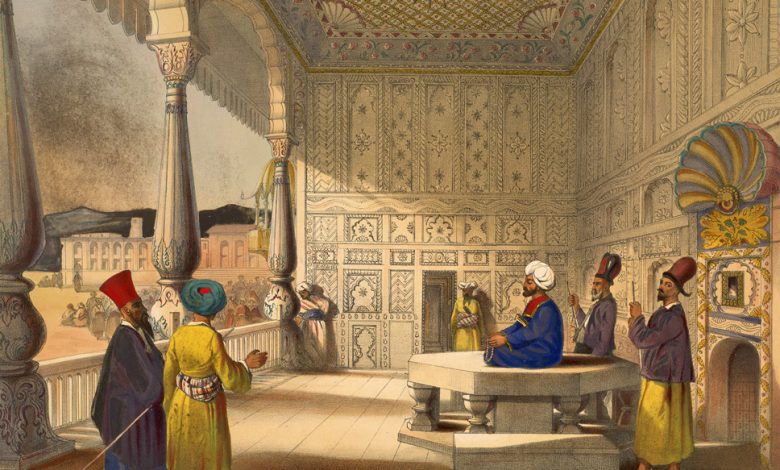Introduction And History of Afghanistan: Unveiling a Rich Legacy
Afghanistan is a country in South-Central Asia. It has a long and rich history.

Afghanistan is a country in South-Central Asia. It has a long and rich history. This article will take you through the key events and historical figures that have shaped Afghanistan.
Geography of Afghanistan
Afghanistan is a landlocked country. It is bordered by Pakistan, Iran, Turkmenistan, Uzbekistan, Tajikistan, and China. The country has a diverse landscape. It includes mountains, deserts, and fertile plains.
Early History of Afghanistan
The history of Afghanistan goes back thousands of years. The land was home to many ancient civilizations. One of the earliest known cultures was the Indus Valley Civilization.
The Indus Valley Civilization
The Indus Valley Civilization flourished around 3300 BCE. It was one of the world’s first major urban cultures. The people of this civilization built well-planned cities. They had advanced drainage systems and impressive architecture.

Credit: www.airuniversity.af.edu
Alexander the Great
In 330 BCE, Alexander the Great invaded Afghanistan. He was a famous conqueror from Macedonia. His invasion brought Greek culture to the region. This period is known as the Hellenistic Era.
The Hellenistic Era
The Hellenistic Era lasted for about 200 years. During this time, Greek influence was strong in Afghanistan. Greek art, language, and architecture left a lasting mark.

Credit: en.wikipedia.org
The Rise of Buddhism
In the early centuries CE, Buddhism spread in Afghanistan. The Kushan Empire played a key role in this. The Kushans were a powerful dynasty that ruled much of Central Asia.
The Kushan Empire
The Kushan Empire emerged in the 1st century CE. They were great patrons of Buddhism. They built many monasteries and stupas. The famous Bamiyan Buddhas were carved during this time.
The Islamic Conquest
Islam arrived in Afghanistan in the 7th century. Arab armies brought the new religion. The people of Afghanistan gradually converted to Islam.
The Ghaznavid Dynasty
The Ghaznavid Dynasty ruled from the 10th to the 12th century. They were one of the first Muslim dynasties in Afghanistan. They expanded their empire into India and Persia.
The Mongol Invasion
In the 13th century, the Mongols invaded Afghanistan. Genghis Khan led the invasion. The Mongol conquest brought great destruction but also new influences.
Genghis Khan
Genghis Khan was a fearsome leader. He created one of the largest empires in history. His armies were known for their speed and ferocity.
The Timurid Dynasty
The Timurid Dynasty rose to power in the 14th century. They were descended from the Mongols. The Timurid period was a time of cultural renaissance in Afghanistan.
Timur
Timur, also known as Tamerlane, founded the Timurid Dynasty. He was a great conqueror and patron of the arts. His capital was in Herat, which became a center of culture and learning.
The Modern Era
In the 18th century, Afghanistan became a unified state. Ahmad Shah Durrani is considered the founder of modern Afghanistan. He established the Durrani Empire in 1747.
Ahmad Shah Durrani
Ahmad Shah Durrani is often called the “Father of the Nation.” He united the various tribes and regions of Afghanistan. His reign marked the beginning of a new era.
The 19th and 20th Centuries
The 19th and 20th centuries were times of great change. Afghanistan became a battleground for foreign powers. The British and Russians both sought to control the region.
The Anglo-afghan Wars
There were three major wars between the British and Afghans. These are known as the Anglo-Afghan Wars. The Afghans fought bravely to maintain their independence.
Independence and Modernization
Afghanistan gained full independence in 1919. King Amanullah Khan led the country into a period of modernization. He introduced many reforms and sought to modernize Afghanistan.
King Amanullah Khan
King Amanullah Khan ruled from 1919 to 1929. He was a progressive leader. His reforms included modern education and women’s rights. However, his changes faced resistance, and he was eventually forced to abdicate.
The Soviet Invasion
In 1979, the Soviet Union invaded Afghanistan. This led to a long and brutal conflict. Afghan fighters, known as Mujahideen, resisted the Soviet forces.
The Mujahideen
The Mujahideen were Afghan guerrilla fighters. They fought against the Soviet occupation. With support from the United States and other countries, they eventually forced the Soviets to withdraw in 1989.
The Taliban Era
After the Soviet withdrawal, Afghanistan fell into civil war. In 1996, the Taliban seized control of the country. They imposed strict Islamic law and were known for their harsh rule.
The Taliban Regime
The Taliban ruled from 1996 to 2001. They banned many forms of entertainment and education for girls. Their regime was marked by severe human rights abuses.
The 21st Century
In 2001, the United States led an invasion of Afghanistan. This was in response to the September 11 attacks. The Taliban were quickly overthrown, and a new government was established.
Rebuilding Afghanistan
The early 21st century has been a time of rebuilding. Efforts have been made to improve infrastructure, education, and healthcare. However, the country still faces many challenges.
Frequently Asked Questions
What Is The Origin Of Afghanistan’s Name?
The name “Afghanistan” means “Land of the Afghans. “
When Was Afghanistan Founded?
Afghanistan was founded in 1747 by Ahmad Shah Durrani.
What Is Afghanistan’s Ancient History?
Afghanistan’s history dates back to 3000 BCE with ancient civilizations like the Indus Valley and Aryan invasions.
Who Were The First Inhabitants Of Afghanistan?
The first inhabitants were ancient civilizations such as the Aryans and the Indus Valley people.
Conclusion
Afghanistan has a long and complex history. From ancient civilizations to modern conflicts, the country has seen it all. Understanding this history helps us appreciate the rich culture and resilient spirit of the Afghan people.
Thank you for reading about the introduction and history of Afghanistan. We hope you found this article informative and engaging.
